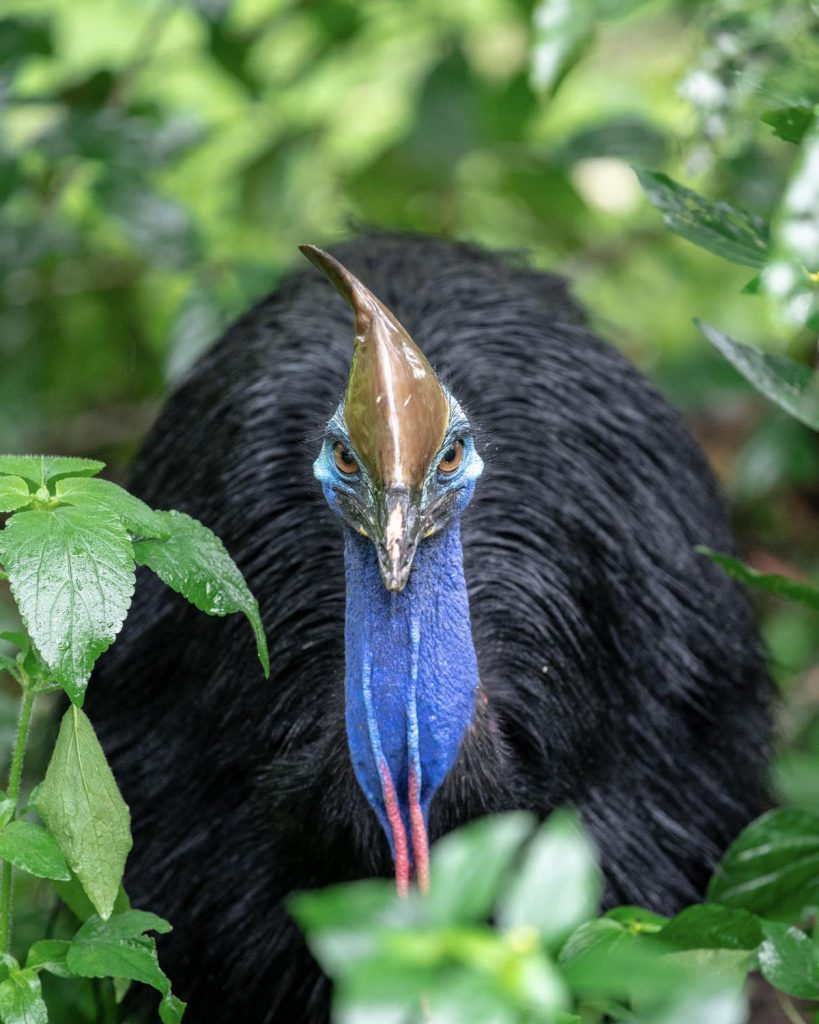Critter Corner – Southern Cassowary

Southern Cassowary (Credit: Martin Stringer Photography)
#CritterCorner – Given that 26 September was World Cassowary Day, we wanted to shine the spotlight on our beloved Rainforest Gardener – the Southern Cassowary (Casuarius casuarius johnsonii).
Adult Southern Cassowaries are typically between 1.5-1.8 meters tall, coming in behind Emus & Ostriches in the tallest birds category. The adult females are larger than males, weighing up to 70 kilograms (males rarely exceed 50 kilograms).
While the Southern Cassowary (Casuarius Casuarius) can be found in New Guinea, one subspecies lives in Far North Queensland, Australia (Casuarius casuarius johnsonii). This subspecies is listed as Endangered under the Environment Protection and Biodiversity Conservation Act 1999.
The Southern Cassowary is an extremely important species in Far North Queensland’s tropical rainforests. It is the rainforest gardener, a ‘keystone species’ that maintains the balance and diversity of its rainforest home through its role as a seed disperser. The Southern Cassowary’s main food is rainforest fruits, and the gentle treatment of the fruits through the Cassowary’s primitive digestive system means the seeds are passed relatively unharmed and ready for germination in their own “compost heap” of dung! In other words, their poop grows trees!
Cassowaries are known to eat the fruit of at least 238 species of which 149 are woody trees. 45 of these plants have large fruit that are mostly dispersed by the Southern Cassowary over long distances.
Threats to the Southern Cassowary include habitat loss, fragmentation, and degradation, vehicle strikes, dog attacks, disease, natural disasters such as cyclones, and climate change.
Fun Facts:
- The name ‘Cassowary’ is derived from two Papuan Malay words. Kasu meaning “horned” and weri meaning “head”. This refers to the distinctive ‘casque’ on the cassowaries head.
- Once the female has laid her eggs, she departs, leaving the male to incubate the eggs. Once hatched, the male continues in this nurturing role until the cassowary chicks are 18 months to 2 years old. Quite the dutiful dad!
- For many years no one knew what the cassowaries ‘distinctive helmet’ was for. In 2019 researchers at La Trobe University showed the cranial structure acts like a radiator or “thermal window”. This helps the large, flightless birds keep cool in hot weather. Read more here.
- Cassowaries cannot fly and are part of the ratite family. In addition to this, their origins date back to the prehistoric time period (did someone say #DinosaurBirds!?)
- In October 2021 a study conducted by —- indicates that the cassowary was one of the first animals raised by humans, roughly 18,000 years ago. Their findings also suggested that Cassowaries were also hunted as food. Click through to read the USA Today article or the study published in the Proceedings of the National Academy of Science.
Want to learn more? Visit the ‘Save the Cassowary’ section of our website today.
Want more good Rainforest news in your life?
Subscribe to our eNews | Follow us on Instagram | Like us on Facebook | Subscribe to our YouTube channel
Help Protect Rainforests Forever
Donate to Protect Rainforests Forever | Become a Rainforest Guardian for as little as $2 a month | Partnership Options

